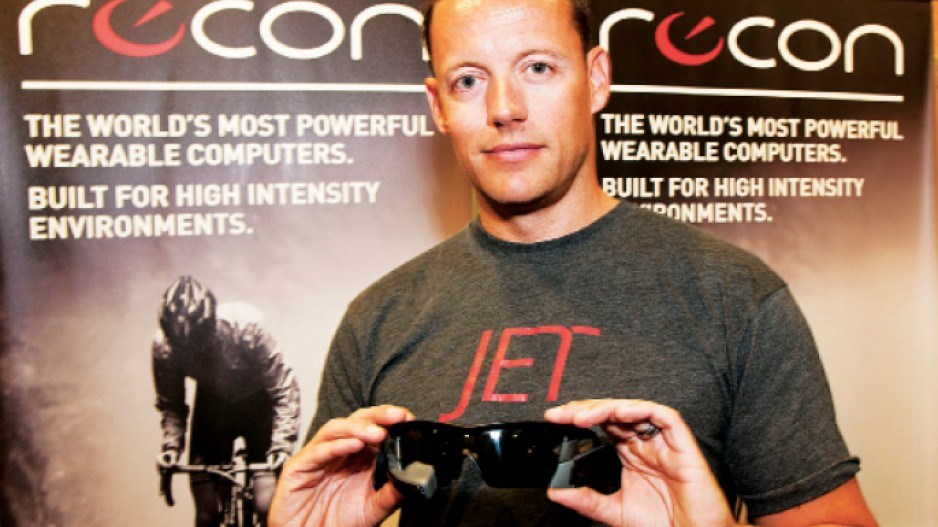Arrow Transportation Systems workers used to spend hours collecting mechanical data and driver safety information from truck drivers once vehicles arrived back at dispatch centres.
When it came time to upgrade the system of data collection seven years ago for its 300-truck fleet, the Vancouver-based company outfitted all its vehicles with mobile SIM cards allowing for instant wireless monitoring.
“Transportation is a process optimization business,” Arrow chief operating officer Mitchell Zulinick said. “Not having a technological-based solution [is] not an option.”
In addition to the man-hours saved collecting data, Arrow's “Internet of Things” (IoT) solution – the tech industry's buzzword for its products – cut fuel costs 8%.
Zulinick added that the technology paid for itself soon after being implemented.
But IoT has yet to penetrate mainstream consciousness the way email or social media has. According to a July IDC survey commissioned by Telus (TSX:T), only 6% of Canadian companies have deployed it.
IoT refers to intelligent computer systems that transmit data between each other and respond accordingly in real time based on the information they receive. No human interaction is required.
But IoT's significance goes beyond commercial applications like Arrow's.
“It's going to bleed into the fabric of our lives – we're not even going to know it's there,” said Dealmaker Media CEO Debbie Landa, who has been organizing the annual Grow Conference the past four years.
This year's conference hits Whistler August 20 to 23 and is showcasing the myriad consumer uses of IoT.
“Because everyone has a phone that connects to the Internet, now [mobile devices] can also connect to all these sensors,” Landa said, adding IoT technology can be used to program appliances to turn on and off depending on one's proximity to them.
In 2008, Dan Eisenhardt co-founded Vancouver's Recon Instruments, which is one of the B.C. companies appearing at the Grow Conference this year.
The sportswear company was the first to develop a wearable heads-up display, or HUD, showing a snowboarder's or cyclist's performance metrics through his or her goggles.
“We're not saying that this technology is going to be used [by] everyone. There's a certain path to get to this mass market in wearables,” the CEO said. “If we're saying wearables [are] going to be driven through health and fitness, then there's no better place on the planet than Vancouver [to launch Recon].”
Eisenhardt added the key is figuring out how soon it will be before IoT devices really hit the mainstream. He pointed out smartphones were originally expensive until they took off and prices dropped.
Eisenhardt expects IoT-related technology to have a similar price trajectory.
But Tony Olvet, vice-president of research domains at IDC, noted many Canadian business leaders tend to be more risk-averse than their American counterparts when it comes to new ways of thinking.
“Sometimes that's a good thing, if you look at financial markets, for instance,” he said. “But sometimes that can hold back some innovation.”
The IDC survey, however, showed IoT deployment is expected to ramp up in Canada with another 7% of companies preparing to implement IoT technologies in 2014. Another 30% are expected to adopt the technologies in the next two years.
And IoT spending is projected to grow to $21 billion by 2018 from $5.6 billion in 2013.
Jim Senko, Telus' vice-president of small business and emerging markets, acknowledged some companies are reluctant to spend money investing in more technology.
But he pointed out IDC's survey shows the adoption rate is rising in Canada.
“The hardware, the application, the hosting, the wireless are all prepackaged and bundled together so they're easier to digest.”
Senko added that a logistics company tracking the movements of its truck fleet could expect to invest between $400 and $500 annually per vehicle for all the hardware and support.
The return on investment comes from what the analytics provide the company. “Business leaders need to understand how they [can] make use of data and information that they're gathering in the field that they perhaps wouldn't have been able to capture in the past,” Olvet said. “And now that capability exists through sensors and networks.”




